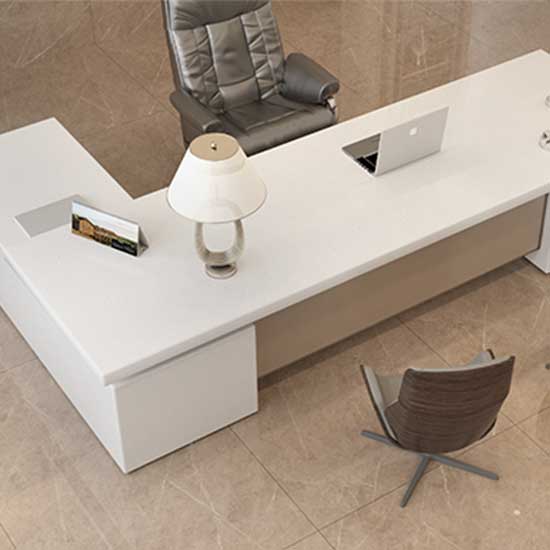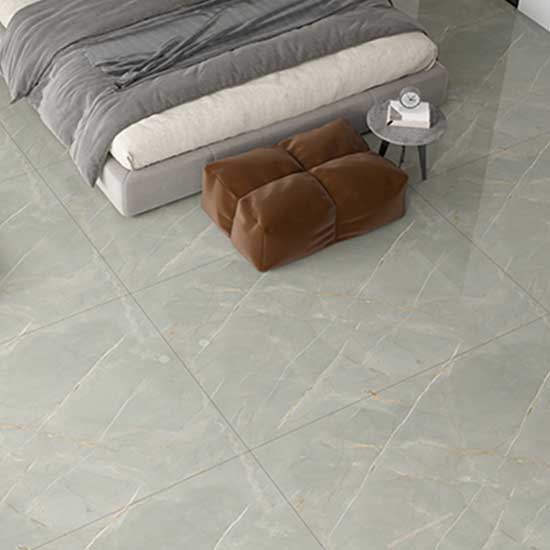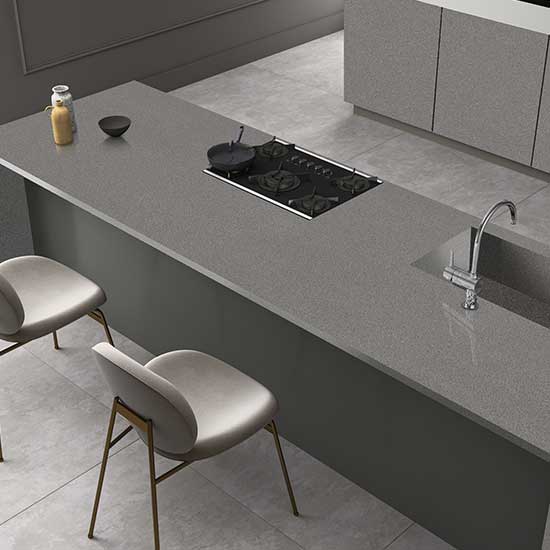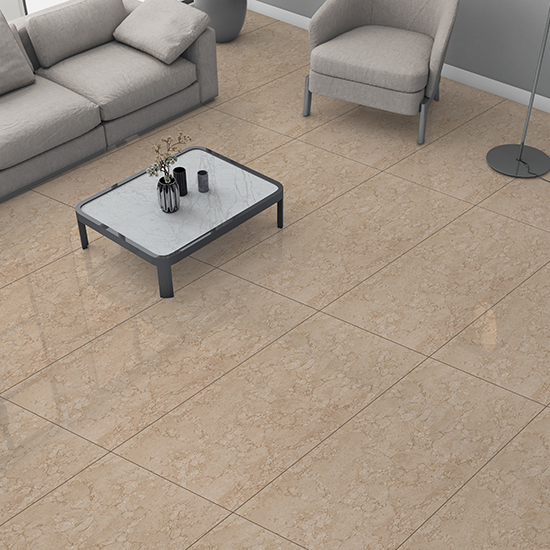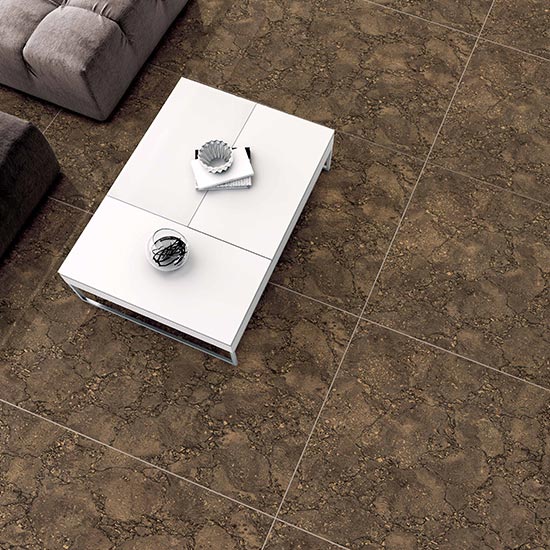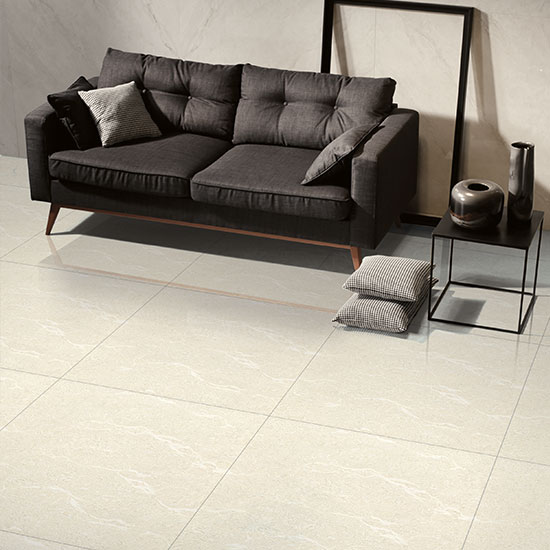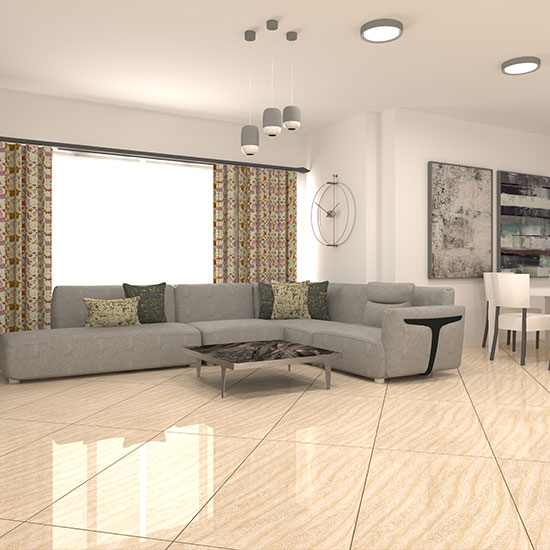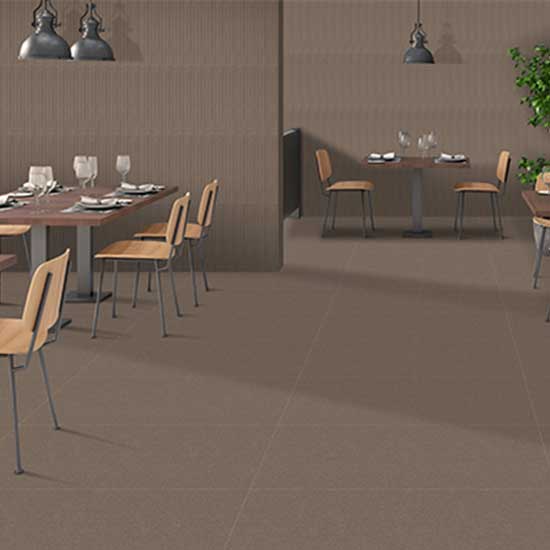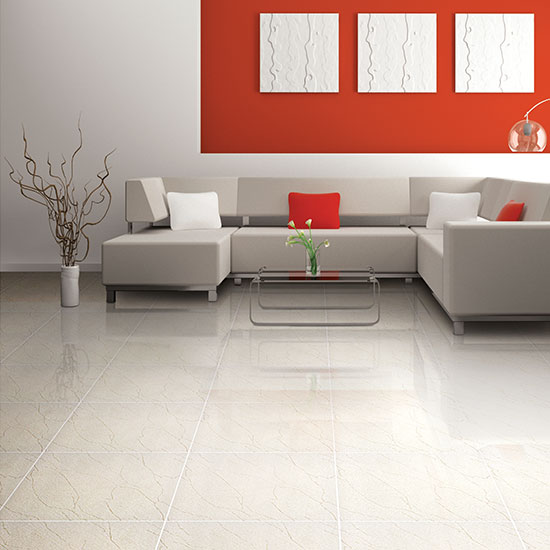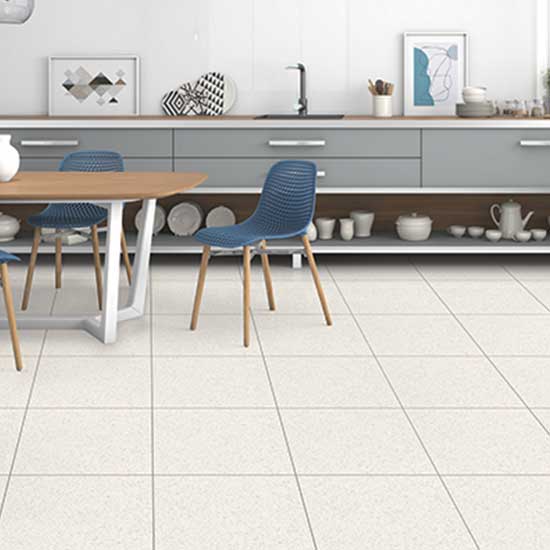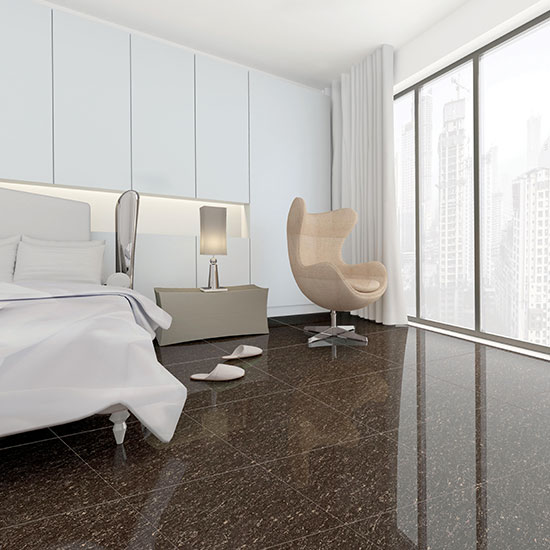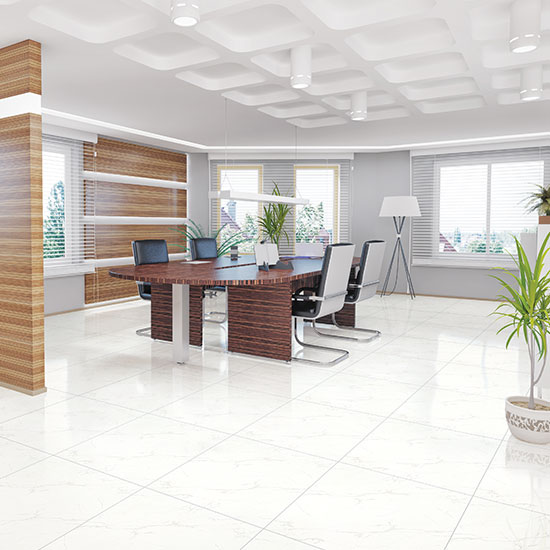
Sneak Peak To Vitrified Tiles
Vitrified tiles are one of the sturdiest manufactured building materials. The vitrification process allows us to manufacture materials with the properties and appearance of natural stones. The process and clay mixture for the base material can be modified to produce tiles of varying strength, weight, and appearance.
Due to their sturdiness, low porosity, and insulative properties vitrified tiles provide a more than perfect alternative for natural stones like marble, granite, and sandstone.
At H&R Johnson you can find several portfolios of vitrified tiles. Johnson Endura and Johnson Marbonite tiles are the product lines you can explore for fully vitrified tile solutions.
Explore more of H&R Johnson’s vitrified tiles collection below:
Marbonite Vitrified Tiles Collections
Premium Vitrified Tile Designs at H&R Johnson
H&R Johnson offers polished vitrified tiles and matte-finish vitrified tiles with varying degrees of surface resistance. Polished vitrified and double-charged vitrified tiles designs receive their inspiration from natural stones like marble, granite, and sandstone.
Johnson vitrified tiles also feature wood patterns. However, terracotta and stone finishes are more common designs for vitrified floor tiles. Other than common stone designs you also have the options of mosaic, bookmatch, and geometric designs for outdoor floor tiles.
Johnson’s vitrified tiles collection offers solutions for flooring in outdoor spaces such as pavement, gardens, outdoor seating areas, and parking lots. The portfolio also consists of vitrified floor tile designs for special purposes like workshops, ramps, high-grip pavements, staircases, public utilities, data centres, hospitals, and nuclear power plants.
You can consider the following design portfolios for vitrified tiles at H&R Johnson:
- Johnson Marbonite Elite & Elite Plus Double Charge Vitrified Tiles
- Johnson Marbonite Elite & Elite Plus Full Body Vitrified Tiles
- Johnson Marbonite SSF (Stain & Scratch Free) Tiles
How to Choose the Best Vitrified Tiles?
You can choose the best vitrified tile for your area of application based on the following factors:
- Type of the Space: You can choose a specific vitrified tile for use in areas like kitchens, bedrooms, offices, parking, garden, staircases, etc. Vitrified tile designs will offer different features and surface characteristics for each of these areas.
- Area of the Application Space: The strong body and physical characteristics make vitrified tiles perfect for floor applications. However, depending on the type of usage for the floor the tile type will change. For example. Johnson Paver series tiles can handle light vehicle traffic. However, for garden pathways and outdoor seating, you can use Johnson Max-grip and Meteor tiles.
- Surface Type: Johnson’s vitrified tile collection provides specialized solutions for spaces like retail stores, workshops, industrial floors, outdoor settings, parking lots and swimming pools. Depending on the safety requirement of the area, you can choose a verified tile design that offers you adequate surface grip. For instance, garden tiles should have excellent grip for foot traffic, so that they are safe for walking even during rain.
- Type of Footfall: While all vitrified tiles can handle medium to high footfall, you should take care of the type of traffic the tiles will receive. If you expect foot traffic on the tiles, most floor tiles can handle it. However, if you are tiling a vehicle parking area, you should use appropriately strengthened tiles. Similarly, tiles for staircase steps have groove lines for extra grip and bull nosing for feet safety.
- Décor Requirements: Once you have identified the size, types, and qualities of tiles you are looking for you can start to finalise the designs. Wood lookalike, granite, marble, coordinated, mosaic, and colours of the tiles. Johnson also has several unique looks with large and medium-sized tiles.
- Special Characteristics: Industrial floor tiles and cool roof tiles offer special characteristics. Industrial floor tiles can offer anti-radiation, anti-static, and chemical-resistant properties for use in power plants, manufacturing facilities, data centres and workshops. Cool roof tiles can remain cooler than the ambient temperature despite their exposure to sunlight.
Find H&R Johnson Tiles Prices
Tile prices vary based on the tile's region, design, type, size and thickness. For accurate tile prices, you can visit Johnson’s Experience Centre or locate a nearby dealership.
Different Tile Sizes At H&R Johnson
Large Size Tiles
| 80x240 - 15mm | 80x300 - 15mm | 120x180 - 15mm | 80x160 cm | 60x120 cm |
Medium Size Tiles
| 80x80 cm | 60x60 cm |
Small Size Tiles
| 40x40 cm |
Types of Vitrified Tiles
H&R Johnson offers all types of vitrified tiles. All vitrified tiles have base material with different compositions going through the same vitrification process. The vitrified tiles are different based on their composition of body and surface finish:
- Full-Body Vitrified Tiles: Full-body vitrified tiles are made of silica, clay, feldspar, quartz, and grains of colour pigment. All vitrified tiles are baked at around 1200 degrees centigrade. These tiles feature a uniform structure and can be cut and shaped like a stone block after manufacturing.
- Double-Charged Vitrified Tiles: Double-charged vitrified tiles have a thick layer of colour pigment applied directly on the tile’s surface. The dual tone of the colours on these tiles gives them the name double charge tiles. Due to the thick layer of colour pigment, tiles can hide minor scratches on the surface.
- Glazed Vitrified Tiles: Glazed Vitrified tiles are vitrified tiles with a hardened layer of glaze on top. The glazed surface can be digitally printed with high-definition graphics allowing unique patterns and better-than-perfect replicas of natural materials.
- Polished Vitrified Tiles: Vitrified tiles have a surface with nanopores. Even though the tiles are almost waterproof, the pores can still hold liquids causing the tile to get stained. When polished, these tiles have the nanopores filled to the extent that the tile will become stain-resistant. Polish also gives these tiles a reflective surface.
- Industrial Tiles: Industrial tiles can be manufactured with different materials for strength, surface quality and characteristics as per the industry. For instance, industrial parking tiles, anti-radiation tiles, anti-static, and chemical and alkali-resistant tiles.
Vitrified Tiles by Space of Application
- Countertop Tile for Kitchen & Bathroom
- Cool Roof Tiles
- 3D Elevation Tiles
- Floor Tiles for Commercial Spaces
- Outdoor & Parking Tiles
- Staircase Tiles
- Swimming Pool Tiles
- Tac Tiles for Public Spaces
- Radiation Shield Tiles
- Anti-Static Tiles
The Most Popular Tile Colours at H&R Johnson
- Beige
- Black
- Blue
- Brown
- Chocolate
- Concrete
- Grey
- Ivory
- Sandstone
- Terracotta
- Wenge
- White
- Yellow
FAQs
1. Do vitrified tiles break easily?
No, vitrified tiles are one of the hardest flooring materials. However, their breaking strength depends on the tile thickness and density. Vitrified tile thickness for floor applications varies from 0.8cm to 2cm. you can install 1.2cm thick 60x60cm vitrified tiles with raised bases for seating areas and patio. You can check the technical details for an accurate measure of the tile-breaking strength.
2. How do you identify good-quality vitrified tiles?
You can check the technical specifications for declared values of tile water absorption (0.05% or less for vitrified tiles), surface hardness, tile breaking strength, measurement errors, surface error (curve), and surface resistance. You can test the surface flatness of tiles by laying the tile on a perfectly horizontal surface and pouring water on it. The tile should not retain the water in the center which could mean a concave (inwardly bent) surface.
3. How do you maintain vitrified tiles?
Maintaining vitrified tiles is easy. Polished vitrified tiles should be wiped for any dust accumulations using a microfibre cloth dipped in mild soap mixed with warm water. Matte finish and outdoor tiles only require sweeping them clean of excess dirt. If you have used adhesive to fix the tiles check for the broken sealing and repair any damage as soon as possible.
4. Can we use vitrified tiles in bathrooms?
Vitrified tiles are best for bathrooms due to their low water absorption and high capacity for handling foot traffic. It's suitable for both Floor & Wall applications.
5. What are vitrified Tiles?
Vitrified tiles are slabs of material manufactured by heating a mixture of clay, feldspar, silica, quartz, and other minerals at temperatures above 1200 degrees centigrade. This process fuses all the minerals in a glass-like substance and results in a material that can resemble natural stones in physical characteristics.
Related Blogs
Get In Touch

Locate our Johnson Tiles Display Centre in India
Visit our House of Johnson Showrooms or you can Book a Free Appoinment with our Tile Expert

Connect with our Johnson Tiles Dealers
Find the best and nearest Johnson Tiles Dealers at your Place and at your Convenience

Johnson Tiles Catalogue
Download H & R Johnson Wall and Tiles Catalogue PDF for Spaces like Bathroom, Kitchen, Elevation, Bedroom, Drawing Room, and Parking Area.

